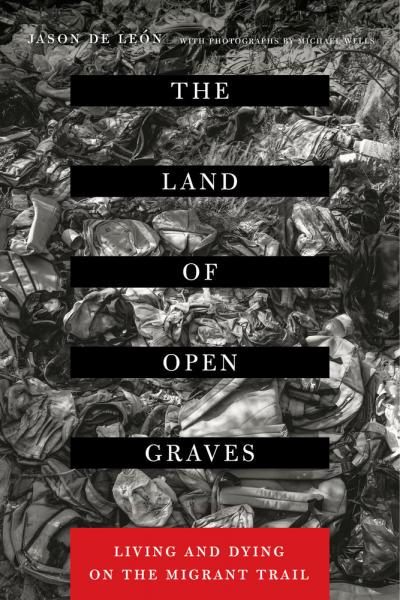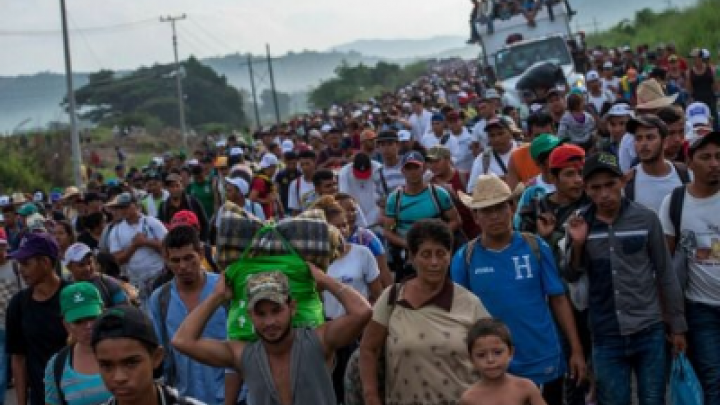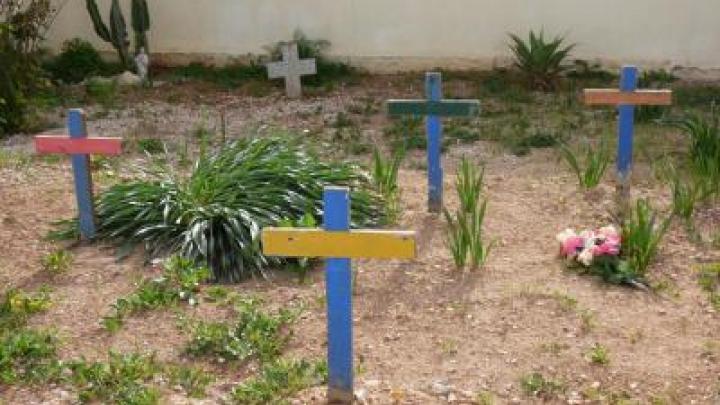Book Review: The Land of Open Graves: Living and Dying on the Migrant Trail
Posted
Time to read
Post by Andrew Roesch-Knapp. Andrew will be starting his PhD in Criminology, Law and Society this fall at the University of California, Irvine.
Review of The Land of Open Graves: Living and Dying on the Migrant Trail by Jason De Leon (Author) and Michael Wells (Photographer) (University of California Press, 2015)

Rather than looking at the entirety of the Mexican-American border, De León focuses specifically on the Sonoran Desert in southern Arizona. His main argument is that the desert is used as a tool of border enforcement: the desert is ‘a killing machine’ which is part of the federal government’s ‘Prevention through Deterrence’ program. This program aims to prevent illegal immigration through robust border enforcement. Yet, instead of halting people, it pushes them to the incredibly hostile terrain of the Sonoran Desert. To illustrate the implications of this strategy, between January 2000 and September 2014, 2,771 bodies were found in this desert. And this figure includes only those who have been recovered; the actual number of dead is unknown.
This violence is the primary theme of the book: the violence perpetrated in the desert, the stakeholders that benefit from this violence, and the victims of the desert’s destructiveness are all examined in depth. Weaving together fieldwork in Mexico and Arizona, and pairing this with anthropological analysis, De León brings the reader excruciatingly―and yet necessarily―close to the viciousness of this policy. The stories of people most effected by the Sonoran Desert are also told throughout the book. For instance, there are the middle-aged Mexican men Lucho and Memo who lived in the US for years yet were deported. After more than one failed attempt at crossing which almost kills them, they eventually ‘make it’ back into the US to live in a dusty trailer park in Arizona. There is also the story of José, a 15 year old Ecuadorian boy raised by his grandparents. His parents illegally immigrated to the US when he was a young child so they could make money and send back to him. When José’s girlfriend gets pregnant, he decides it’s time to ‘be a man’ and support his soon-to-be family. He chooses to walk across the Sonoran Desert into Arizona. Yet José doesn’t make it and disappears. His body remains unfound. Today his girlfriend, Tamara, is raising their infant daughter, still hoping he will return.
These are the human consequences that De León shines a light on. And this is precisely what makes this book important and gut-wrenching. Readers are drawn into the violent logic of ‘Prevention through Deterrence’ and shown the complex forms of violence that the state uses to uphold border enforcement. He achieves his intention to ‘make visible’ the immigration security paradigm, which is designed to be hidden.
As a social scientist and photographer myself, I was particularly interested in seeing how De León used the ‘photoethnography’ method. According to De León, he chose to include photographs of undocumented people so readers could most ‘appreciate them as human beings’ (p. 18). Collaborator Michael Wells took most of the photographs and disposable cameras were also given to Memo and Lucho to use as they crossed the Sonoran Desert. Although this methodology does help us to understand border control, I was forced to reflect on its ethicality. Is it more important to share their photographs, or is it a literal and figurative weight added to people who are fighting for physical survival?
Indeed, given the power photographs can hold as tools of communication, engaging with them as a component of academic analysis can enable more holistic understandings of difficult subject matter. Although the book did begin this project, I nevertheless found myself disappointed. This wasn’t because the photographs were poor compositionally, but rather because the printing of them was lacking. They were printed on the same paper type as the text, in black and white, and missing full tonal ranges. For this reason, many of the photographs were underwhelming.
At the same time, I applaud De León for taking the risk of including photographs in an academic book. The social sciences are by and large an unfriendly place for the visual image, which impedes a fuller, more nuanced understanding of the social world. From the criminological viewpoint, given that punitive penal and immigration policies are upheld in part by their lack of public visibility, it is perhaps high time that the discipline rethinks its relationship to the visual. De León use of images as part of his anthropological analysis is therefore notable. Yet, at the same time, just because social scientists are not ‘fine artists’ doesn’t mean that images shouldn’t be afforded high-quality reproduction.
Overall, the book provides a scathing, holistic critique of American immigration policy. De León successfully dismantles the violence of the Sonoran Desert in a way that neither exaggerates nor sterilizes. He’s passionately opposed to current border practices, yet the book is grounded in evidence that doesn’t need amplified language. He contests not only the discipline of anthropology, but also other disciplines such as criminology through his approach. His engagement with illegal immigration through photography, archeology, forensic science, linguistics, and ethnography is revitalizing in its full encapsulation and acknowledgement of its complexity.
The approach is also refreshing in its disruption of sterilized academic discourse on life, death, and suffering. It pays homage to brown bodies which disappear under the scorching sun of the Sonoran Desert, and the scavenging of dead bodies by the relentless turkey vulture. In bearing witness to this brutality―even on these pages―The Land of Open Graves is an important read for anthropologists, sociologists, criminologists, and members of the public who are interested in US border enforcement. I wholly recommend this book.
Any comments about this post? Get in touch with us! Send us an email, or post a comment here or on Facebook. You can also tweet us.
__________
How to cite this blog post (Harvard style)
Roesch-Knapp, A. (2016) Book Review: The Land of Open Graves: Living and Dying on the Migrant Trail. Available at: https://www.law.ox.ac.uk/research-subject-groups/centre-criminology/centreborder-criminologies/blog/2016/07/book-review-land (Accessed [date]).
Share
YOU MAY ALSO BE INTERESTED IN
With the support of









